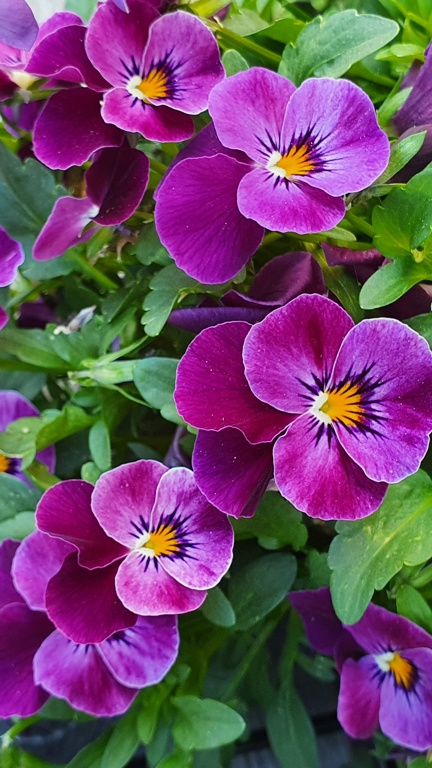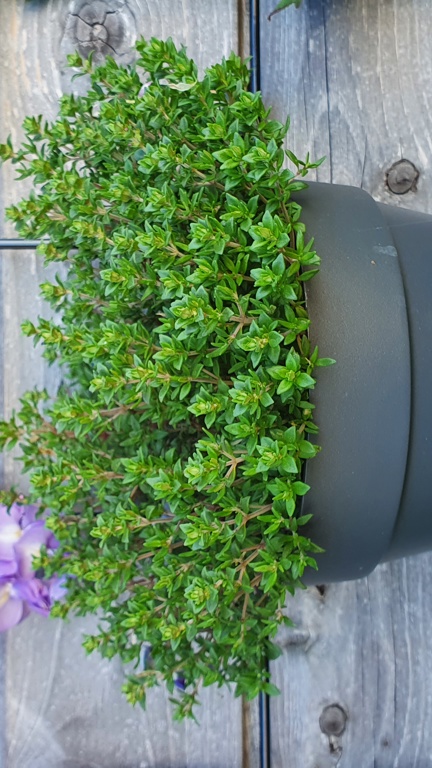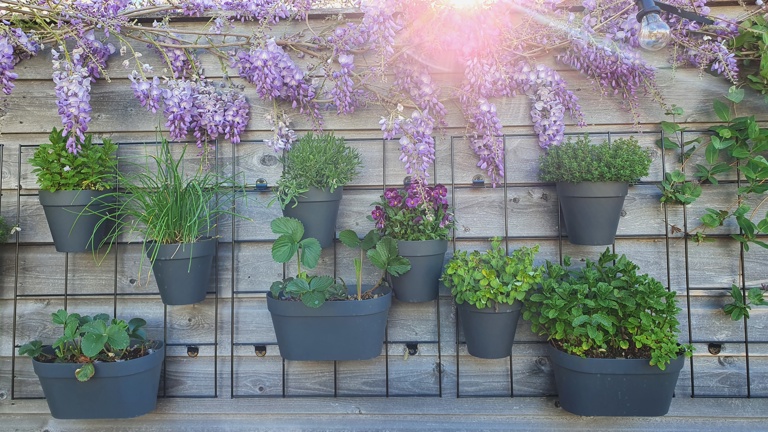
Vertical gardening on your fence or balcony
Do you enjoy natural surroundings and especially the tranquillity that greenery evokes? Then of course you’d also love to enjoy that feeling at home; however, perhaps you only have a small garden or balcony? Well, I’ve got the solution: vertical gardening! A balcony or garden without a green wall is almost unheard of nowadays. This is particularly true in areas where a fence or concrete wall between your property and your neighbour’s is very bare or simply because you want to grow plants in a limited space. Flowers in pots, a climbing raspberry or other decorative and edible plants: you can do anything! In the following blog you’ll find a number of useful tips on how to make maximum use of your garden walls or balcony and turn them into a green oasis for both humans and animals.
The benefits of vertical gardening and green walls
- One of the advantages of a green wall is that your outdoor space isn’t as hot during the summer. Plants are able to absorb water and this water then evaporates again through the leaves. You’ll find that sitting next to a green wall full of decorative or edible plants is a lot cooler than sitting next to a bare wall, regardless of the type of plant.
- More green means more biodiversity.
- It will make the area seem larger, and you’ll notice that more is happening and therefore more depth is created in the garden or on the balcony because of the greenery on the walls. There is more space for your eye to wander and it feels as if you’ve gained a few extra square metres.
- A vertical vegetable garden is also easy to reach and more comfortable to maintain because you don’t have to bend over in between your plants.

Tips for choosing the right pot for your plant wall
Certainly you can use any pot on your terrace or in the garden. However, it’s better to choose suitable pots if you plan to enhance a wall with a vertical garden.
- You don’t necessarily need pots that are specifically for growing or harvesting. That means you can be creative with planters in various colours.
- Choose specific pots with a saucer underneath or one which is attached to the pot. Or choose a pot with a built-in water reservoir so that you don't have to worry about watering your plants.
- Water evaporates from the soil more slowly when the pots are a lighter colour.
- Choose a lightweight pot, because you’ll also be filling the pot with soil. A terracotta, or stone pot can sometimes become incredibly heavy.
- Are you planning to hang the pots on a fence or are you going to drill holes so that the pots can be hung? Then check whether the wall is stable enough to hang something on it. Tap the wall, do you hear a hollow sound or can you hear something crumbling? If so, it certainly won’t support the weight of a planter full of soil. If the surface is made of wood, has it been weather treated? Be sure to check the quality of the wood.
- Choose a pot that is suitable to use in a vertical garden so that you can easily attach it to a fence or to another support. For example, you can go for the loft outdoor pot, which includes a matching This ensures that you have a complete and compatible system.
Suitable soil
Choose a universal potting compost, which contains enough nutrients to last for the next three to four months. Have you noticed that your plants aren’t growing well, have sprouted yellow leaves or even shed their leaves during the summer months? This is not how things are supposed to be. There is a very high probability that the nutrients from the soil are no longer adequate to meet your plants’ needs. So, give your plants some extra nutrition. You can use liquid plant food, which you dilute with water or you could even mix in some perlite or vermiculite. These are porous rocks that absorb water and then gradually release nutrition into the soil. This definitely gives your plants a helping hand and prevents the soil from drying out too quickly.
Suitable plants
Not all plants perform well in pots and containers. This is usually due to the fact that they require a certain type of soil, they need more space for extensive root development, or simply because they’re in the wrong location. So, before you buy a plant, make sure that it will grow well in a pot and that you know how much sunlight it needs. Do you want to increase the biodiversity in your garden or are you going to work with edible plants? Then the plants listed below are the most suitable.
Suitable plants for bees and butterflies include:
- great globe thistle
- Aegean thistle
- lavender
- liquorice plant
- lady's mantle
- catnip
- myrtle
- cornflower
- cardoon
- sage
- lupine
- tree or shrubby mallows
- honeysuckle
Suitable edible plants include:
- mint
- thyme
- oregano
- edible violets
- rosemary
- butterhead lettuce
- spinach
- rocket
- strawberries
- climbing courgette

Providing water
- Don’t forget to water your plants on a regular basis. Moisture evaporates more quickly from plants hanging against a wall where the sun shines all day long. The smaller the pot, the more quickly the water evaporates from the soil.
- Stick your finger into the soil. Does some soil cling to it? Then it still has enough moisture. Is it bone dry? Then give it plenty of water. Add a little bit at first, before adding the rest. This method helps the soil absorb more water and therefore also release water for a longer period of time.
- Have you noticed that the days are so incredibly hot that the soil dries out very quickly? Then it is best to water your plants in the early morning and provide them with lots of water. This will help your plants spring to life throughout the day.
- Water plants in pots from below. This will help the plants to root better, because the roots will grow in search of water at the bottom of the pot. You’ll also notice that the plants need water less often, because the water is simply deeper inside the pot.
Covering the soil
One thing I would definitely recommend for plants in pots, whether they are hanging or standing, is to cover the soil with a layer of mulch. This is a protective layer made from organic material. I always choose wood chips, and these can be purchased in bags. You can also choose straw, dried leaves or grass trimmings. The mulch layer not only looks natural and attractive but, in my opinion, it also does the best job of keeping the soil damp for the longest period of time. Cover the soil with a layer of 3 to 5 cm. Not only will the water evaporate less quickly, blowing weed seeds will also not be able to germinate, meaning that the pots remain tidy.

Let’s get going!
Below you’ll find a list of all the products you need to help you get started with your vertical garden or green wall. I’m genuinely curious about what you’ll create! Do you want to share your garden? Then use the tag @elho.world on Instagram or use the hash tags #elho #elhogreenwall.